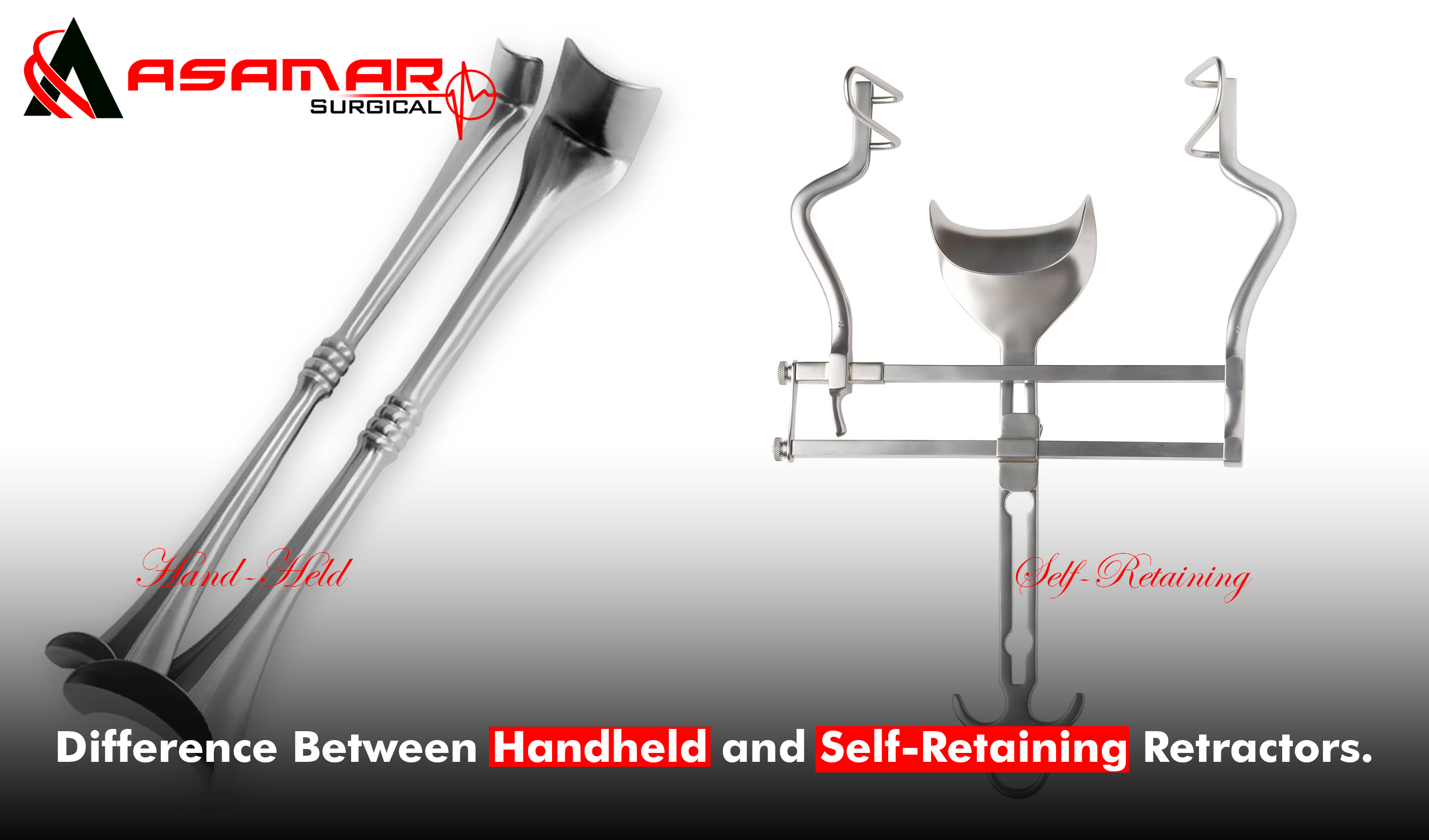In surgical procedures, retractors play a vital role by providing visibility and access to the surgical site. These instruments help hold back tissues, organs, or incisions, allowing surgeons to work efficiently and safely. Among the various types of retractors, the two most common categories are Handheld Retractors and Self-Retaining Retractors. Though they serve a similar purpose, they differ in design, usage, and functionality.
1. What Are Handheld Retractors?
Handheld retractors are manually operated instruments held by a surgical assistant or nurse during a procedure. They are simple in design and come in various shapes and sizes, depending on the specific surgical need.
Key Features of Handheld Retractors:
- Require a person to hold and adjust them.
- Lightweight and easy to maneuver.
- Often used in minor surgeries or short procedures.
- Provide excellent tactile control.
Common Types of Handheld Retractors:
- Army-Navy Retractor
- Senn Retractor
- Deaver Retractor
- Richardson Retractor
2. What Are Self-Retaining Retractors?
Self-retaining retractors are designed to hold themselves in place once positioned. They come with a built-in mechanism, such as a ratchet, screw, or spring system, which locks the retractor in an open position, freeing up the surgical assistant’s hands.
Key Features of Self-Retaining Retractors:
- No need for manual holding during surgery.
- Allows the surgical team to focus on the procedure.
- Ideal for long, complex surgeries.
- Offers a stable and consistent exposure of the surgical field.
Common Types of Self-Retaining Retractors:
- Weitlaner Retractor
- Gelpi Retractor
- Balfour Retractor
- Bookwalter Retractor
- McIvor Mouth Gag (used in oral and throat surgeries)
3. Main Differences Between Handheld and Self-Retaining Retractors
| Feature | Handheld Retractors | Self-Retaining Retractors |
|---|---|---|
| Operation | Held manually by an assistant | Fixed in place using a locking mechanism |
| Control | Provides more tactile feedback | Offers consistent and stable retraction |
| Usage | Shorter, simpler procedures | Longer, more complex procedures |
| Manpower | Requires an assistant | Reduces need for extra personnel |
| Examples | Army-Navy, Deaver | Balfour, Weitlaner, McIvor Mouth Gag |
4. Which One to Use?
The choice between a handheld and a self-retaining retractor depends on various factors:
- Type of surgery
- Duration of the procedure
- Number of surgical staff available
- Need for precision and visibility
In some cases, both types may be used in combination to achieve optimal results.
Conclusion
Understanding the difference between handheld and self-retaining retractors is essential for ensuring proper surgical planning and execution. Both types have their unique benefits, and the correct choice can significantly improve surgical efficiency and outcomes.
At Asamar Surgical Retractor Specialist, we manufacture and supply a wide range of premium-quality surgical retractors, including McIvor Mouth Gags, trusted by professionals around the world. Whether you need handheld precision or self-retaining stability, we’ve got the right instruments for your surgical needs.

